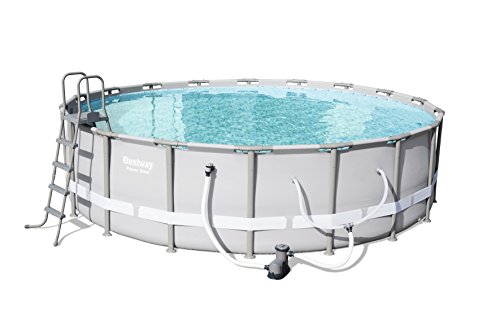Understanding the Importance, Usage, and Application of Cyanuric Acid in Your Above Ground Pool
As a first-time above ground pool owner, you’ll quickly discover that maintaining proper water chemistry is essential for ensuring a clean, safe, and enjoyable swimming environment. One important chemical that plays a crucial role in your pool’s upkeep is cyanuric acid (CYA), also known as pool stabilizer or conditioner. This article will provide an overview of cyanuric acid’s importance, its uses, and guidance on how to use it effectively in your above ground pool.
Why is Cyanuric Acid Important?
Cyanuric acid serves as a stabilizer for the chlorine in your pool water, helping to protect it from the sun’s ultraviolet (UV) rays. UV light can rapidly break down free chlorine, reducing its effectiveness as a sanitizer and causing you to use more chlorine to maintain the appropriate levels. By using cyanuric acid, you can prolong the life of chlorine in your pool, reduce overall chlorine consumption, and maintain a more stable and consistent sanitizer level.
What is Cyanuric Acid Used For?
Cyanuric acid is primarily used to stabilize chlorine levels in outdoor swimming pools, including above ground pools. By shielding the chlorine from UV light, CYA helps maintain a proper balance of sanitizer, preventing algae growth, bacteria, and other contaminants. Additionally, it can help reduce the frequency of pool shock treatments and minimize fluctuations in chlorine levels, providing a more consistent and comfortable swimming experience.
How to Use Cyanuric Acid in Your Above Ground Pool
- Test the water: Before adding cyanuric acid to your pool, it’s essential to test the water to determine the current CYA levels. You can use test strips or a liquid test kit designed to measure cyanuric acid levels. The ideal range for CYA in an above ground pool is typically between 30 and 50 parts per million (ppm).
- Determine the amount needed: Based on your pool’s current CYA levels and volume, calculate the amount of cyanuric acid needed to reach the desired range. Many pool supply stores and online resources offer calculators to help you determine the appropriate amount.
- Pre-dissolve the cyanuric acid: Cyanuric acid can take some time to dissolve, so it’s best to pre-dissolve it in a bucket of water before adding it to your pool. This will help ensure even distribution and prevent damage to your pool liner. Slowly add the cyanuric acid to the bucket while stirring to aid in dissolving.
- Add cyanuric acid to the pool: Slowly pour the dissolved cyanuric acid solution into the pool while the pump is running to ensure proper circulation. Distribute the solution around the perimeter of the pool to ensure even distribution. Avoid pouring the solution directly onto the pool liner, as this may cause damage.
- Retest and adjust as needed: Wait at least 24 hours for the cyanuric acid to circulate and stabilize in your pool. Retest the water to ensure the proper CYA levels have been achieved. If necessary, add more cyanuric acid following the same process until the desired levels are reached.
Conclusion
As a first-time above ground pool owner, understanding the importance and usage of cyanuric acid can help you maintain a clean, safe, and enjoyable swimming environment. By properly testing, calculating, and applying cyanuric acid, you can protect your pool’s chlorine levels, reduce sanitizer consumption, and provide a more consistent and comfortable swimming experience for you and your family. Remember to regularly monitor your pool’s water chemistry and adjust as needed to keep your above ground pool
